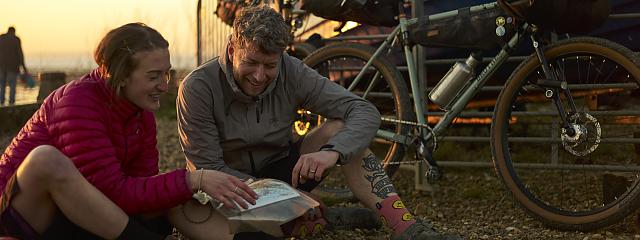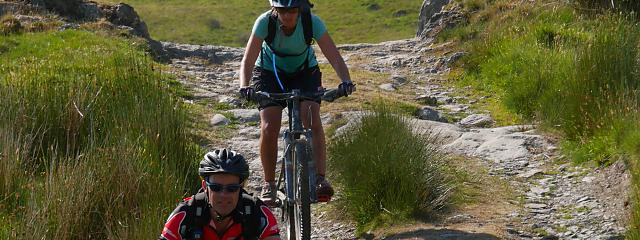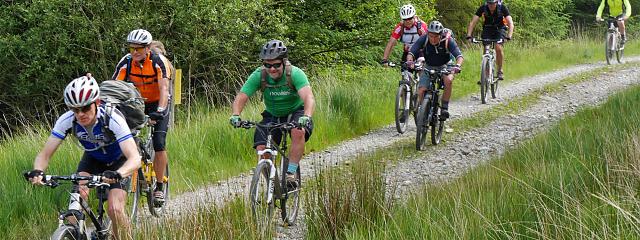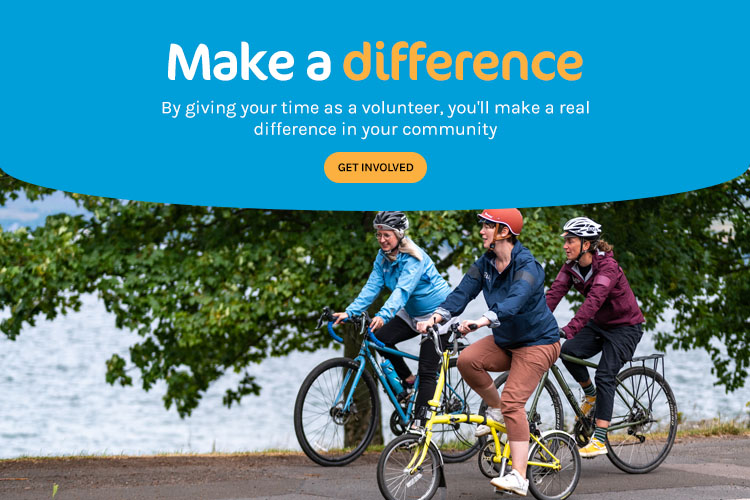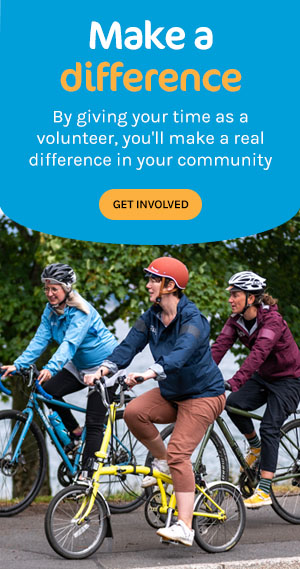
Cycling in Powys
Cycling in Powys
Covering mid-Wales from Brecon northwards, Powys is a large county whose slow winding roads may frustrate motorists but can delight cyclists.
Much of the best cycling is off-road, though. The 14-mile Montgomery Canal, from Welshpool to Newtown, is one of the most beautiful stretches of waterway in Wales, and the newly opened towpath trail along it (part of NCN81, which links Aberystwyth and Shrewsbury) is great for family cycling. Bring binoculars for wildlife spotting.
Lôn Las Cymru (NCN8), the Welsh top-to-bottom cycle route whose 250 miles gives a thrilling overview of the country and which is a great week’s challenge for the tourer, runs right through Powys. (Notably through Machynlleth, home to a Centre for Alternative Technology, on a wonderful stretch of road through Corris and on to Dogellau.) From Merthyr Tydfil down south, long off-road stretches run north alongside reservoirs. West of Rhayader, a characterful mid-Welsh town, more of that NCN81 runs off NCN8 alongside reservoirs in the Elan Valley. It’s outstanding scenery and, being off-road, is fine for families.
More child-friendly canal cycling is on the Monmouth and Brecon canal south of Brecon. Several miles of towpath offer the unusual combination of flat riding and outstanding hill and mountain scenery – this is the Brecons after all.
There aren’t many roads over or into the Brecons themselves. The Usk Valley is good touring country, with several handsome town such as Crickhowell en route. But perhaps Powys’s speciality is for the intrepid off-road adventurer: if you’re into bikepacking, routes in and across mid-Wales are among Britain’s best experiences.
One of Wales’s many rainy days? Llandrindod Wells, in the middle of county, is home to a major bike museum, the National Cycle Collection. It houses over 250 bikes, covering the 150-year history of pedal cycling.
Cycling groups and clubs in Powys
Engine House Bike Club (Brecons)
http://www.cyclinguk.org/local-groups/engine-house-bike-club
Oswestry Paragon (Oswestry)
https://www.cyclinguk.org/local-groups/oswestry-paragon-cc
What to take with you on your ride
The only thing you really need for cycling is a bike. And maybe a phone, and credit card: in Britain you’re only a call away from any service you might need.
But unless money is no object, it’s wise to take a few things with you on a day ride. A saddlebag, panniers or bikepacking bags are best for carrying stuff. A front basket is second best. A rucksack is third best. Your sweaty back will soon tell you why.
Cycling short distances in jeans and t-shirt is fine, but on a long or strenuous ride – over ten miles say, or in hills – those jeans will rub and the t-shirt will get damp and clingy. Shorts or, yes, lycra leggings and padded shorts will be much comfier, and merino or polyester cycling tops wick away the sweat, keeping you dry and comfy. (They don’t have to be lurid colours.)
If rain’s in the air, pack a rainproof top. If it might turn chilly, take a fleece or warm top. But the thing you’re most likely to forget is the sunblock.
It’s remarkable how often you enjoy being out on the bike so much that you suddenly realise it’s getting dark. So take lights (which are legally required at night). They’re price of a sandwich, take no space, are easy to put on thanks to tool-free plastic clips, and the batteries last for ever.
Take a puncture repair kit (with tyre levers) and pump. Make sure it fits your valves, which will be either ‘Presta’ or ‘Schraeder’ – realising they don’t match is a very common roadside discovery! Carrying a spare inner tube (make sure it matches your tyre size) makes puncture repair much easier: mend the old one back at home. If you do get in trouble, some kindly passing cyclist will probably stop to help.
Using a helmet is a personal choice – they’re not legally required.
Cycling makes you thirsty, so take lots of water. Long-distance riders talk about ‘the bonk’ – a sudden loss of energy rendering you almost stationary. It’s miraculously and instantly cured by eating something sweet. On short rides you’re unlikely to run out of energy, but just in case, take a snack like flapjack, banana, chocolate or jelly babies.
Taking a packed lunch or picnic will save you money, though that hot drink and cake in a cosy cafe could yet prove very tempting!
Your phone GPS could be invaluable for showing where you are when lost; you can download free detailed UK maps and GPS software before your trip.
Paper maps are still useful, though, so take one: no power source or wifi signal required, and they’re great for suggesting possibilities or changes of plan.
What have we missed? Recommend your favourite routes using the comments box below.
Cycling routes in Powys
Monmouth and Brecon Canal, the Brecons, Elan Valley and other routes
Cycle A-way’s list of routes, maps and resources in Powys
Montgomery Canal Route Map (NCN81)
Monmouthshire and Brecon Canal






